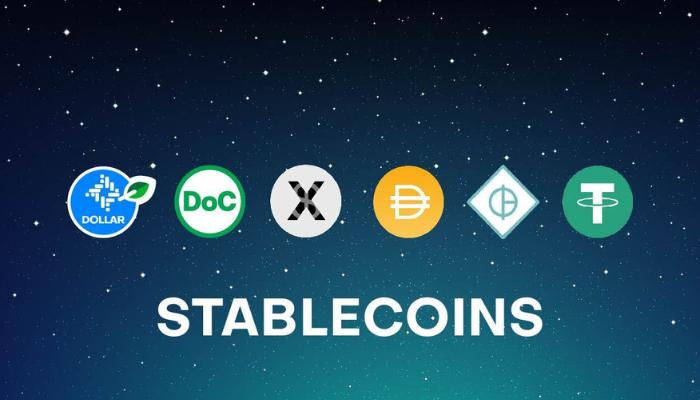How Stablecoins Can Mitigate Market Volatility
As cryptocurrencies continue to revolutionize the global financial landscape, persistent volatility has been a stumbling block to their widespread adoption. However, a promising solution emerges on the horizon: stablecoins.
Advertisements
These cryptocurrencies, designed to maintain stable value amidst market turbulence, offer a viable alternative for those seeking security and reliability in their digital transactions.
Advertisements
In this article, we will delve into the world of stablecoins, exploring their functioning, benefits, and challenges, as well as the exciting prospects they offer for the future of digital finance.
What are they and how do they work?
Stablecoins are a class of cryptocurrencies that seek to maintain a stable value in relation to some external asset, such as fiat currencies, commodities, or even other cryptocurrencies. They achieve this stability through various mechanisms, such as reserves, algorithms, or smart contracts.
Advertisements
What are the types of stablecoins available?
In the realm of cryptocurrencies, stability has long been a sought-after attribute, and stablecoins emerge as a pivotal solution to this challenge. Within the landscape of stablecoins, various types exist, each distinguished by its underlying mechanism for value preservation.

Understanding these diverse categories is essential for grasping the nuances of stablecoin functionality and their significance within the broader cryptocurrency ecosystem. Let’s delve into the three primary types of stablecoins: Fiat-backed stablecoins, Commodity-backed stablecoins, and Algorithmic stablecoins.
- Fiat-backed stablecoins: These are backed by reserves of fiat currencies, such as the US dollar or the euro.
- Commodity-backed stablecoins: They are backed by reserves of commodities, such as gold or silver.
- Algorithmic stablecoins: These do not have backing in any physical asset but instead rely on algorithms to maintain their stability of value.
How are stablecoins guaranteed?
The guarantee of stablecoins varies according to the type. Fiat-backed stablecoins are guaranteed by reserves in banks, while commodity-backed stablecoins have physical reserves of those commodities.
Algorithmic stablecoins depend on protocols and smart contracts to maintain their stability.
Advantages of Stablecoins vs. Volatile Cryptos
In the ever-evolving realm of cryptocurrencies, stability stands out as a beacon of reliability amidst the tumultuous waves of volatility. Stablecoins emerge as a beacon of stability, offering a host of advantages when compared to their more volatile counterparts.
These advantages, ranging from value stability to ease of use and hedging capabilities, underscore the profound impact stablecoins can have on financial transactions and investment strategies. Let’s explore these advantages in detail, shedding light on why stablecoins have become a cornerstone of the digital economy.
Stablecoins offer several advantages over volatile cryptocurrencies, such as:
- Value stability: As the name suggests, stablecoins offer stability of value, which is crucial for payments and remittances.
- Ease of use: Due to their stability, stablecoins are easier to use in daily transactions, without the risk of major price fluctuations.
- Hedge against volatility: Investors can use stablecoins as a hedge against cryptocurrency market volatility, without resorting to traditional assets.
What are the main stablecoin projects?
There are several well-established stablecoin projects, including:
- Tether (USDT): One of the most well-known and widely used USD-backed stablecoins.
- USD Coin (USDC): Another USD-backed stablecoin, developed in partnership between Circle and Coinbase.
- Dai (DAI): A decentralized stablecoin based on the Ethereum protocol, whose value is maintained stable through a complex set of smart contracts.
Usage of Stablecoins in Crypto Ecosystem
Stablecoins are used for a variety of purposes within the cryptocurrency ecosystem, including:
- Trading on exchanges: Many exchanges offer trading pairs with stablecoins, allowing traders to hedge against market volatility.
- Payments and remittances: Due to their stability, stablecoins are used for cross-border payments and remittances, offering a faster and cheaper alternative to traditional methods.
What are the associated risks?
Despite their advantages, stablecoins also present some risks to consider. Among these, the highlights are counterparty risk and regulatory risk.
These issues underscore the importance of understanding the potential challenges that come with using stablecoins, offering a more comprehensive view of the digital financial landscape.
Despite their advantages, stablecoins also present some risks, such as:
- Counterparty risk: Fiat-backed stablecoins are subject to counterparty risk from the banks holding their reserves.
- Regulatory risk: Changes in regulation can affect the issuance and use of stablecoins in different jurisdictions.
How do stablecoins affect the cryptocurrency market?
Stablecoins have a profound impact on the cryptocurrency market, providing stability amidst volatility. They stabilize prices, facilitate trading, and enhance liquidity.
Traders often turn to stablecoins during market turbulence, boosting confidence and mitigating risks. Additionally, stablecoins play a vital role in decentralized finance (DeFi), powering various lending, borrowing, and trading activities.
As DeFi grows, so does the demand for stablecoins, cementing their importance in the cryptocurrency ecosystem.
What are the regulations surrounding stablecoins?
Regulations surrounding stablecoins vary from country to country and are constantly evolving.
Some jurisdictions consider stablecoins as digital assets, subject to the same regulations that apply to other cryptocurrencies, while others may classify them as securities or financial instruments subject to specific regulations.
What are the future prospects of stablecoins?
The future of stablecoins looks promising, with growing interest from traditional financial institutions and regulators.
New innovations, such as stablecoins backed by multiple assets and improvements in blockchain infrastructure, are expected to further drive their adoption and use across various sectors.
In summary, stablecoins represent a significant evolution in the cryptocurrency universe, offering value stability and opening up new possibilities for use within the global financial system.
Over time, they are expected to play an increasingly important role in the digital economy of the future.





